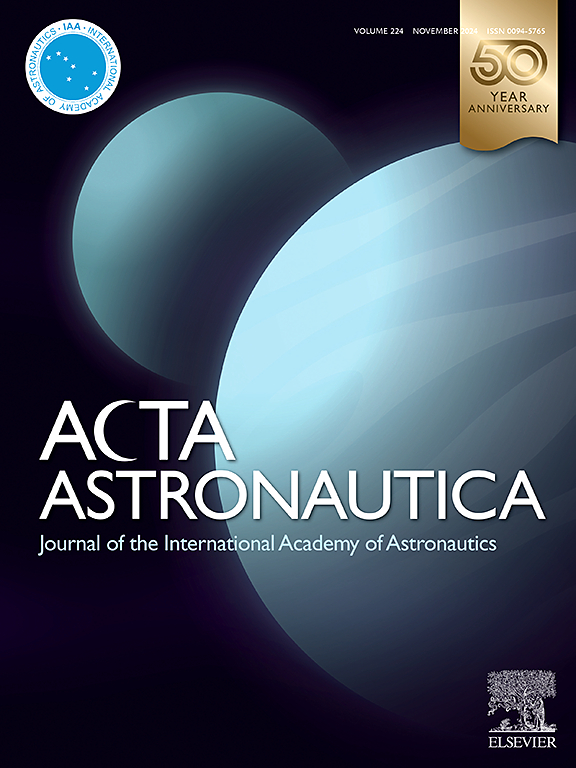AltiCube+: A low-cost long fixed-baseline radar altimeter solution based on cubesats on-orbit assembly
IF 3.4
2区 物理与天体物理
Q1 ENGINEERING, AEROSPACE
引用次数: 0
Abstract
Radar interferometry can be used to obtain sub-kilometre resolution over a swath at the expense of additional transmit power and a sufficiently long baseline to accommodate at least two antennas. This paper reports an innovative concept called AltiCube+, a low-cost long fixed-baseline interferometric radar altimeter based on CubeSats on-orbit assembly. The AltiCube+ concept consists of multiple 16U CubeSats. After an early operation and commissioning phase, these CubeSats will perform autonomous rendezvous and docking with each other via deployable booms to establish a long fixed-baseline, and then deploy antennas for an interferometric altimeter configuration. The uniqueness of AltiCube+ is on the potential scientific opportunities brought by two left and right looking interferometric altimeters with around 6 m baseline (total system length is more than 8 m) and the sustainability due to its significantly low cost and short development lifecycle. If budget allows, multiple AltiCube+ systems with same or different altimetry capabilities can form a constellation to dramatically reduce the revisit time and, therefore, provide much better spatiotemporal coverage.
alticcube +:基于在轨立方体卫星组装的低成本长固定基线雷达高度计解决方案
雷达干涉测量可用于在一条带状上获得亚千米分辨率,但代价是额外的发射功率和足够长的基线以容纳至少两个天线。本文报告了一种名为alticcube +的创新概念,这是一种基于CubeSats在轨组件的低成本长固定基线干涉雷达高度计。alticcube +概念由多个16U立方体卫星组成。在早期操作和调试阶段之后,这些立方体卫星将通过可展开的吊杆进行自主交会和对接,以建立一个长固定基线,然后为干涉测高仪配置部署天线。AltiCube+的独特之处在于,它的两个左右视干涉高度计带来了潜在的科学机会,它们的基线约为6米(系统总长度超过8米),而且由于其显著的低成本和较短的开发周期,它具有可持续性。如果预算允许,多个具有相同或不同测高能力的alticcube +系统可以组成一个星座,从而大大减少重访时间,从而提供更好的时空覆盖。
本文章由计算机程序翻译,如有差异,请以英文原文为准。
求助全文
约1分钟内获得全文
求助全文
来源期刊

Acta Astronautica
工程技术-工程:宇航
CiteScore
7.20
自引率
22.90%
发文量
599
审稿时长
53 days
期刊介绍:
Acta Astronautica is sponsored by the International Academy of Astronautics. Content is based on original contributions in all fields of basic, engineering, life and social space sciences and of space technology related to:
The peaceful scientific exploration of space,
Its exploitation for human welfare and progress,
Conception, design, development and operation of space-borne and Earth-based systems,
In addition to regular issues, the journal publishes selected proceedings of the annual International Astronautical Congress (IAC), transactions of the IAA and special issues on topics of current interest, such as microgravity, space station technology, geostationary orbits, and space economics. Other subject areas include satellite technology, space transportation and communications, space energy, power and propulsion, astrodynamics, extraterrestrial intelligence and Earth observations.
 求助内容:
求助内容: 应助结果提醒方式:
应助结果提醒方式:


